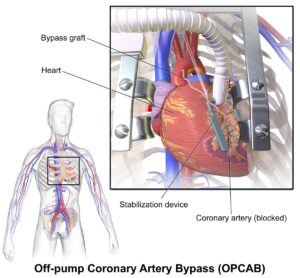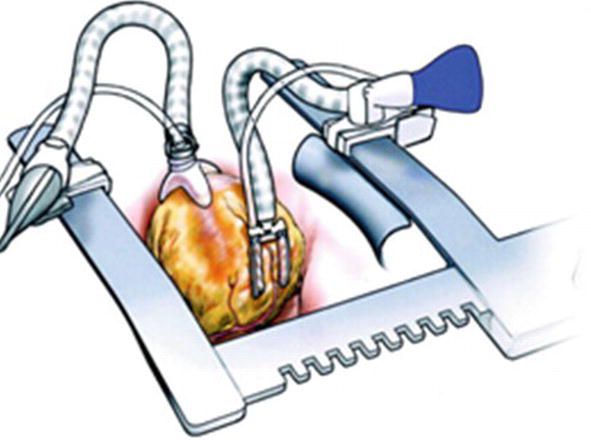Beating heart bypass (Off-Pump Bypass) method is a modern coronary bypass surgery performed without stopping the heart. Coronary artery disease occurs when there is blockage or narrowing in the arteries that supply blood to the heart. This condition can lead to the heart not receiving enough oxygen and can progress to serious health problems, including heart attacks over time. One of the most effective surgical methods applied in such cases is coronary bypass surgery.
In traditional bypass surgeries, the heart is stopped, and the patient is connected to a heart-lung machine. However, with the advancement of technology and surgical techniques, bypass surgery can now be performed without stopping the heart, meaning while the heart is still beating. This method is called Beating Heart Bypass or medically known as Off-Pump Bypass (OPCAB).

What is the Off-Pump Bypass Method?
The off-pump method is a bypass technique where the heart and lungs continue to function, meaning circulation is maintained naturally. During this procedure performed without stopping the heart, the surgeon stabilizes only the area of the heart where the operation will be performed using special stabilizing devices. Thus, while the heart continues to work, the bridging (bypass) procedure is safely performed beyond the blocked coronary arteries.
This method, unlike techniques using the classic heart-lung pump, allows working without interfering with the body’s natural circulation.
How is the Surgery Process Carried Out?
Beating heart bypass is usually performed by cutting the breastbone in the middle, known as sternotomy, similar to classic open surgery. However, in some special cases, it can also be applied with minimally invasive, meaning smaller incisions.
The surgeon places a new vessel graft (mostly vessels taken from leg veins or chest wall) in place of the blocked vessel. The entire procedure is performed while the heart is rhythmically working. Special “stabilizer” tools are used to prevent the heart from quivering during this process.
Who Can It Be Applied To?
The off-pump bypass method may not be suitable for everyone. Each case should be evaluated separately according to the surgeon’s and hospital’s technical equipment. This method is particularly suitable for patients in the following conditions:
- Elderly patients
- Those at risk for using a heart-lung machine
- Those with kidney disease or cerebrovascular disease
- Patients with single vessel or few blocked vessels
In complex cases or patients with multiple vessel blockages, the traditional (pumped) method may be preferred.
What Are the Advantages?
The off-pump bypass technique is preferred because it carries less risk of complications, especially in certain patient groups. Its main advantages are:
- Side effects of the heart-lung machine are avoided.
- Blood loss and need for blood transfusion are reduced.
- The risk of deterioration in kidney and brain functions after surgery is low.
- Intensive care duration may be shorter.
- Hospital stay may be reduced.
- The recovery process can be more comfortable.
Despite all these advantages, the application of this method requires advanced surgical skill and experience.
Recovery Process
The recovery process after off-pump bypass varies depending on the patient’s general health condition and how the surgery was performed. If the breastbone was opened, a few weeks are needed for bone healing. However, since the heart is not stopped and there is no external intervention to systemic circulation, organ functions may recover faster.
After surgery, patients are usually monitored in intensive care for 1-2 days. Then, with ward follow-up, discharge may be possible within 5-7 days. In the post-discharge period, medication therapy, heart-friendly nutrition, and gradual return to physical activity are of great importance.
Beating heart bypass is a safe and effective surgical option, especially for high-risk patient groups. This surgery, performed without stopping the heart, can offer a more comfortable experience during the recovery process while also reducing the risks of complications. The decision on which method to use for surgery is made by the heart surgeon after evaluating the patient’s specific condition.

